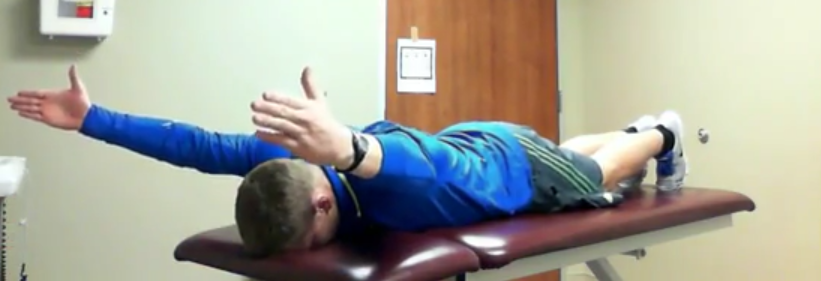- Home
- About Us
- TSPT Academy
- Online Courses
-
Resources
- Newsletter
- Business Minded Sports Physio Podcast
- Day in the Life of a Sports PT
- Residency Corner
-
Special Tests
>
-
Cervical Spine
>
- Alar Ligament Test
- Bakody's Sign
- Cervical Distraction Test
- Cervical Rotation Lateral Flexion Test
- Craniocervical Flexion Test (CCFT)
- Deep Neck Flexor Endurance Test
- Posterior-Anterior Segmental Mobility
- Segmental Mobility
- Sharp-Purser Test
- Spurling's Maneuver
- Transverse Ligament Test
- ULNT - Median
- ULNT - Radial
- ULNT - Ulnar
- Vertebral Artery Test
- Thoracic Spine >
-
Lumbar Spine/Sacroiliac Joint
>
- Active Sit-Up Test
- Alternate Gillet Test
- Crossed Straight Leg Raise Test
- Extensor Endurance Test
- FABER Test
- Fortin's Sign
- Gaenslen Test
- Gillet Test
- Gower's Sign
- Lumbar Quadrant Test
- POSH Test
- Posteroanterior Mobility
- Prone Knee Bend Test
- Prone Instability Test
- Resisted Abduction Test
- Sacral Clearing Test
- Seated Forward Flexion Test
- SIJ Compression/Distraction Test
- Slump Test
- Sphinx Test
- Spine Rotators & Multifidus Test
- Squish Test
- Standing Forward Flexion Test
- Straight Leg Raise Test
- Supine to Long Sit Test
-
Shoulder
>
- Active Compression Test
- Anterior Apprehension
- Biceps Load Test II
- Drop Arm Sign
- External Rotation Lag Sign
- Hawkins-Kennedy Impingement Sign
- Horizontal Adduction Test
- Internal Rotation Lag Sign
- Jobe Test
- Ludington's Test
- Neer Test
- Painful Arc Sign
- Pronated Load Test
- Resisted Supination External Rotation Test
- Speed's Test
- Posterior Apprehension
- Sulcus Sign
- Thoracic Outlet Tests >
- Yergason's Test
- Elbow >
- Wrist/Hand >
- Hip >
- Knee >
- Foot/Ankle >
-
Cervical Spine
>
- I want Financial Freedom
- I want Professional Growth
- I want Clinical Mastery
 As my clinical knowledge and understanding of the nervous system continues to develop, I am finding that "muscle strength" is a relative term. In a previous post, Chris discussed how performing repeated movements can immediately improve an individuals strength. Similar to repeated movements, joint manipulation has shown similar results clinically. The exact mechanism by which a manipulation works is unknown. The most recent evidence suggests that it is multi-factorial. Some proposed effects of manipulation include: 1) Mechanical- breaking up intra-articular lesions 2) Neurological- "resets" nocioceptive pathways and mechanoreceptors 3) Hydraulic- changes in synovial fluid viscosity 4) Relaxation- alter muscle tonicity & restore blood flow 5) Psychological- both laying hands on the patient & hearing a "pop" are strong influences A clinical example you can test tomorrow is assessing lower trapezius strength, then performing different manipulations, and reassessing the strength after each manipulation. The three manipulations I recommend performing are a supine thoracic manipulation, a CT junction manipulation, and C3-C4 manipulation. I want to note that restrictions may not always be found in these regions. Remember: neurophysiological effects can have a profound impact on pain and function. Why Perform These 3 Manipulations?
Like this post? Check out our insider access page to see more clinical reasoning similar to this!
1 Comment
impressed with your thought process. Better than most chiro's I know. But your extremely close segmentally, you're missing the big picture of supra segmental activation and interpose nucleus activation along with somatosensory activation. These guys will give you the long term response. That's why some get better then some get worse or no change at all.
Reply
Leave a Reply. |
Dr. Brian Schwabe's NEW Book in partner with PaleoHacks!
Learn residency-level content on our
Insider Access pages We value quality PT education & CEU's. Click the MedBridge logo below for TSPT savings!Archives
July 2019
Categories
All
|






 RSS Feed
RSS Feed